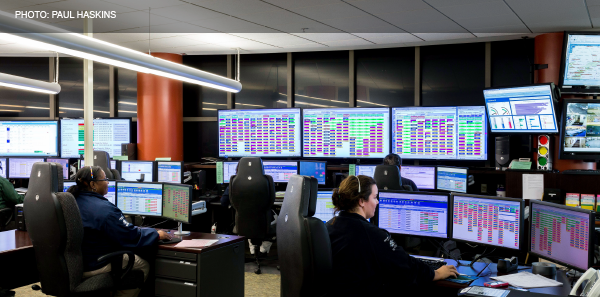
For the past four years, I have had the honor of serving as the medical director of Carilion Clinic’s Transfer and Communications Center (CTaC), based in Roanoke, Virginia, where we are responsible for facilitating patient transfers into and out of our system, ensuring the ease of patient admissions, addressing EMTALA issues, and spearheading the policies that improve patient flow and communications through the system. We are the only Level 1 trauma center for 150 miles in any direction, and we also have a pediatric emergency department.
Explore This Issue
ACEP Now: Vol 36 – No 09 – September 2017Command Center Overview
A command center helps break down system-wide silos and brings together disparate groups. For example, the CTaC is composed of patient placement, transfer center, case management, patient transport, environmental services, behavioral health call intake, and ambulance/helicopter dispatch, all staffed 24-7-365 under one roof. This strategic approach is based on principles from the distributive situational awareness theory, which high-reliability organizations like NASA implement to facilitate successful outcomes.
From a physical perspective, a command center is an actual space that brings together hardware and software to provide system-wide visibility and transparency. This comprehensive system replaces what were previously manual tasks (eg, white boards, phone calls, and paper orders). We are structured like something from NASA, where banks of computer screens in one room allow teams to easily determine what patients are coming into the system, what rooms are available at each hospital, and where each patient should be moved to or placed in order to receive the care required (see photo).
The center operates 24 hours a day, with clinical and non-clinical staff serving as the system’s eyes and ears. The level of responsiveness with this structure is unprecedented, with everything occurring in real time. This type of transparency makes it possible to always know when patients are coming in and going out; it’s also possible to predict the times that will be busier in order to effectively staff for them. Changes can be easily communicated across departments, and we know that when patients receive more rapid placement, care commences sooner, leading to better overall outcomes.
With this type of integrated approach, and the extensive data driving it, the command center serves as the source of truth for data and analytics for the entire health system. It also helps to resolve competing departmental priorities with the situational awareness it provides. It is a truly synergistic approach between people, process, and technology.
Pre-CTaC: Barriers to Access and Throughput
Carilion Clinic is responsible for serving the health care needs of more than 1 million Virginians. Prior to the implementation of the CTaC, we were dealing with barriers to access and throughput that impacted our ability to serve our population. We were experiencing increasing patient volumes but did not have enough beds to accommodate them. We were also dealing with length-of-stay issues, which were inhibiting our ability to bring in new patients. This, in turn, created a stressed, overextended workforce as well as dissatisfied patients and families due to inefficiencies
Pages: 1 2 3 | Single Page





No Responses to “Carilion Clinic Transfer and Communications Center Helps Improve ED Patient Flow, Outcomes”